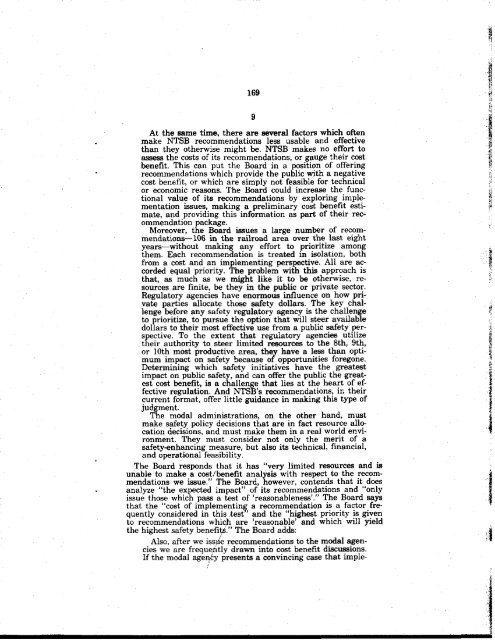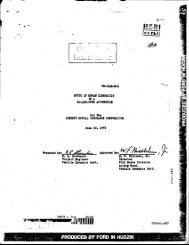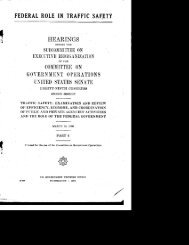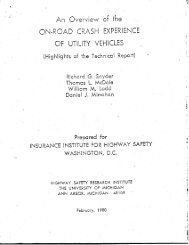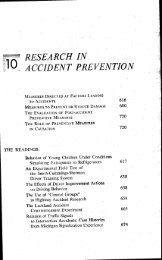virsight hearing - Motor Vehicle Hazard Archive Project
virsight hearing - Motor Vehicle Hazard Archive Project
virsight hearing - Motor Vehicle Hazard Archive Project
Create successful ePaper yourself
Turn your PDF publications into a flip-book with our unique Google optimized e-Paper software.
69<br />
9<br />
At the same time, there are eeveral factors which often<br />
make NTSB recommendations less usable and effective<br />
than they otherwise might be. NTSB makes no effort to<br />
aseesg the costs of its recommendations, or gauge their cost<br />
benefrt. This can put the Board in a position of offering<br />
recommendations which provide the public with a negative<br />
cost benefit, or which ari simply not feasible for technical<br />
or economic reasons. The Boiri could increase the functional<br />
value of its recommendations by exploring implementation<br />
issues, making a preliminary cosi benefrt estimate,<br />
and providing this-info'rmation ai part of their recommendation<br />
package.<br />
Moreover, the Board issues a large numtrer of reconmendations-106<br />
in the railroad areia over the last elht<br />
years-without making any effort to prioritize among<br />
them. Each recommendation .is treated in isolation, both<br />
from a cost and an implementing perspective. All are accorded<br />
equal priority. The problem with this approach is<br />
that, as much as we might like it to be otherwise, resources<br />
are finite, tre they in the public or private sector.<br />
Rezulatory agencies have enorrrous inlluence on how privaie<br />
parties;llocate those safety dollars. The key challenge-before<br />
any safety regulatory agency is the challenge<br />
to Drioritize. to pursue the option that will steer available<br />
doliars to their irost effectivri use from a public safety perspective.<br />
To the extent that regulatory agencies utilize<br />
tireir authority to steer limited iesourc& td ttre 8th, gth,<br />
or 10th most productive area, they have a less than oPtimum<br />
impact on safety because of opportunities lbregone.<br />
Determining which safety initiatives have the greatest<br />
impact on public safety, and can offer the public the greatest<br />
cost beirefrt, is a cirallenge that lies at the heart of effective<br />
regulation. And NTSB's recommendations, ir' their<br />
current format, offer little guidance in rnaking this type of<br />
judgment.<br />
The modal administrations. on the other hand, must<br />
make safety policy decisions tliat are in fact resource alle<br />
cation decisions, and must make them in a real world environment.<br />
They must consider not only the merit of a<br />
safety-enhancing measure, but also its t6chnical, financial,<br />
and operational feasibility.<br />
The Board responds that it has "very limited resources and i8<br />
unable to make a cost/benefrt analysis with respect to the recommendations<br />
we issue." The Board. howene., con-tends that it does<br />
analyze "the expected impact" of its recommendations and ''only<br />
issue those which pass a test of 'reasonableness'." The Board says<br />
that the "cost of implementing a recommendation is a factor fre<br />
quently considered iir this test'' and the "highet priority is given<br />
to rec6mmendations which are 'reasonable' and which will yield<br />
the highest safety benefits." The Board adds:<br />
Also, after we issde recommendations to the modal agencies<br />
we are freque;itly drawn into cost benefit discussions.<br />
If the modal agency presenk a convincing case that imple-<br />
I<br />
i<br />
t!<br />
i<br />
ri


